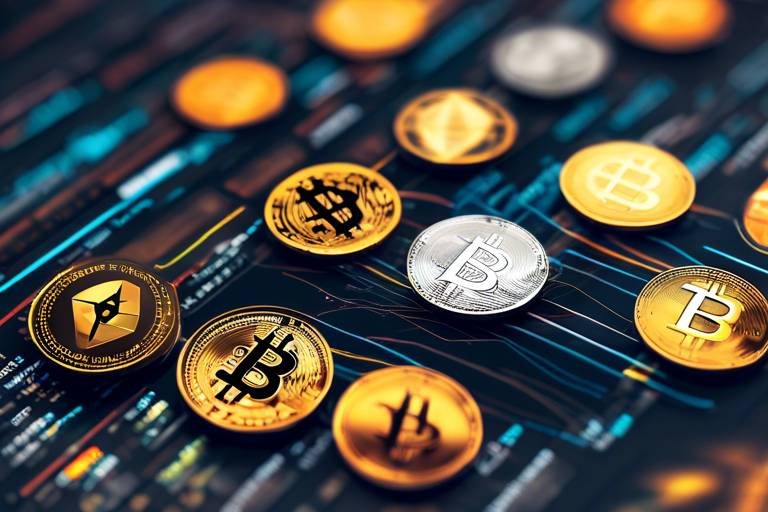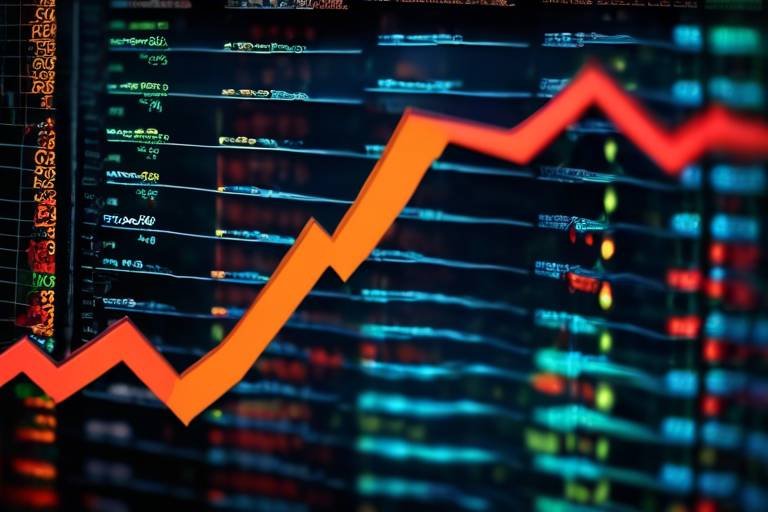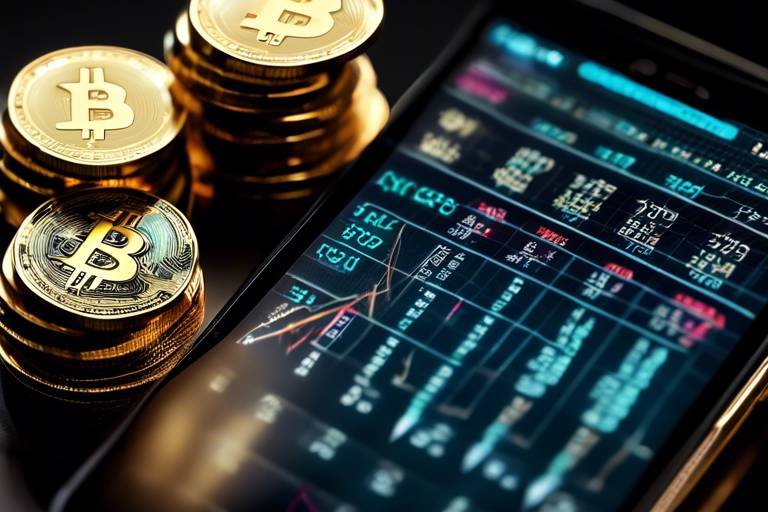Evaluating the Impact of Technology on Market Volatility
In today's fast-paced financial landscape, the influence of technology on market volatility cannot be overstated. As we delve into this topic, it becomes evident that advancements in technology have not only reshaped how we trade but also how we perceive and react to market movements. From algorithmic trading to the pervasive influence of social media, technology has introduced both opportunities and challenges for investors and market regulators alike.
One of the most significant changes brought about by technology is the rise of algorithmic trading. These automated systems enable traders to execute orders at lightning speed, often in fractions of a second. While this can lead to enhanced market efficiency, it can also introduce unforeseen volatility. Imagine a race where cars can accelerate and decelerate in the blink of an eye; the outcome can be unpredictable, much like the stock market's response to rapid trades. Algorithmic trading can create a feedback loop where price movements trigger further trading, leading to dramatic swings in asset values.
Moreover, the role of social media in shaping market sentiment has grown exponentially. Platforms like Twitter and Reddit have become essential tools for investors seeking information and insights. However, this democratization of information can lead to a double-edged sword. On one hand, it empowers retail investors; on the other, it can amplify irrational behavior driven by hype or misinformation. For instance, a trending hashtag can send a stock soaring or plummeting within hours, demonstrating how quickly sentiment can shift in the digital age.
To illustrate this point further, consider the phenomenon of viral trends on social media. These trends can create a ripple effect, influencing thousands of investors to act on impulse rather than informed decision-making. A classic example is the rise of meme stocks, where companies with little fundamental backing see their stock prices skyrocket due to online chatter. This brings us to the question: how do we balance the advantages of rapid information dissemination with the risks of volatility it creates?
In addition to social media, technological innovations such as artificial intelligence and machine learning are revolutionizing market predictions. These technologies analyze vast amounts of data to identify patterns and forecast market movements with remarkable accuracy. However, as we become more reliant on these tools, we must also consider the potential for over-reliance, which could lead to systemic risks if these models fail to predict sudden market shifts.
As we continue to explore the intersection of technology and market volatility, it is crucial to understand how these advancements are reshaping investor behavior. The digital age has changed the way individuals approach investing, often leading to shorter-term strategies driven by real-time information. This shift can create a more volatile market environment, as investors react swiftly to news and trends, sometimes without fully understanding the underlying factors at play.
In conclusion, the impact of technology on market volatility is profound and multifaceted. While it offers numerous advantages, such as increased efficiency and access to information, it also presents significant challenges that require careful consideration. As we navigate this landscape, both investors and regulators must remain vigilant, adapting to the ever-evolving nature of technology in the financial markets.
- How does algorithmic trading contribute to market volatility?
Algorithmic trading can lead to rapid price movements as automated systems react to market changes, often amplifying volatility.
- What role does social media play in investor behavior?
Social media influences investor sentiment, leading to rapid buying or selling based on trends and discussions rather than fundamental analysis.
- Are there risks associated with high-frequency trading?
Yes, high-frequency trading can contribute to market instability and poses challenges for regulators trying to maintain fair and orderly markets.
- How can emerging technologies improve market predictions?
Technologies like AI and machine learning can analyze vast datasets to identify trends and improve forecasting accuracy, but they also carry risks if over-relied upon.

Algorithmic Trading and Market Dynamics
Algorithmic trading has revolutionized the financial landscape, acting as the backbone of modern trading strategies. Imagine a world where decisions are made in milliseconds, where computers analyze vast amounts of data faster than a human can blink. This is the essence of algorithmic trading: systems designed to execute trades based on predefined criteria. But how does this technological marvel influence market dynamics? The answer is multifaceted, with both stabilizing and destabilizing effects.
On one hand, algorithmic trading enhances market efficiency. By enabling rapid transactions, these systems help to narrow bid-ask spreads, making it cheaper for investors to buy and sell securities. This increased liquidity can lead to a more stable market environment. However, the flip side is that the speed at which these trades are executed can amplify volatility. For instance, during periods of market stress, algorithms may react to price movements in a way that exacerbates downturns, leading to a phenomenon known as a "flash crash." A flash crash occurs when market prices plummet in a very short time, only to recover just as quickly. Understanding this duality is key to grasping the impact of algorithmic trading.
Furthermore, algorithmic trading can lead to what is known as "herding behavior." When multiple algorithms are programmed to react to similar signals, they can create a feedback loop that drives prices in one direction, often ignoring underlying fundamentals. This is akin to a flock of birds suddenly changing direction; the collective movement can create a chaotic scene in the market. In such scenarios, the market may experience sharp price swings, which can be disorienting for traditional investors who rely on more measured, human-driven decision-making.
To illustrate the impact of algorithmic trading on market dynamics, consider the following table that summarizes key effects:
| Effect | Description |
|---|---|
| Increased Liquidity | Algorithms facilitate faster trades, which can lead to tighter bid-ask spreads and more efficient markets. |
| Heightened Volatility | During high-stress situations, algorithmic trading can exacerbate price swings, leading to sudden market drops. |
| Herding Behavior | Similar algorithms reacting to the same signals can lead to collective movements that ignore fundamental values. |
Moreover, the advent of machine learning and artificial intelligence in algorithmic trading has added another layer of complexity. These technologies allow algorithms to learn from past market data, adapting their strategies in real-time. While this can improve trade execution and efficiency, it also raises the stakes. As algorithms become smarter, the potential for unforeseen consequences increases. For example, a poorly designed algorithm might misinterpret a market signal, leading to widespread selling or buying that can disrupt market equilibrium.
In conclusion, algorithmic trading is a double-edged sword. While it can enhance market efficiency and liquidity, it also poses risks related to volatility and irrational market behaviors. As technology continues to evolve, understanding the intricate relationship between algorithmic trading and market dynamics will be crucial for investors and regulators alike. In a world increasingly driven by data and speed, the challenge will be to harness the benefits of algorithmic trading while mitigating its risks.
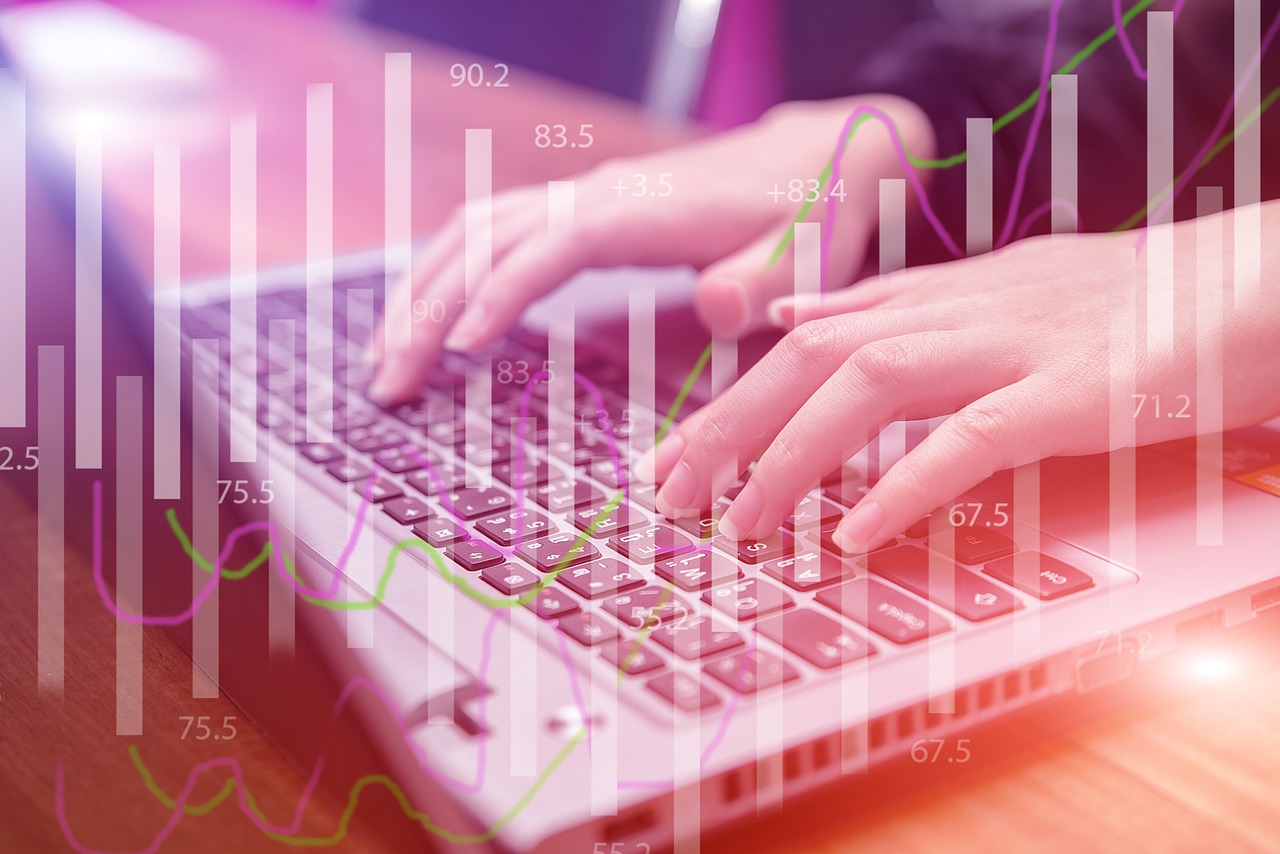
The Role of Social Media in Market Sentiment
In today's fast-paced financial landscape, social media has emerged as a game-changer in shaping market sentiment. Gone are the days when investors relied solely on traditional news outlets for information. Now, platforms like Twitter, Facebook, and Reddit serve as the new battlegrounds where rumors and insights can either propel a stock to new heights or send it tumbling down. Have you ever wondered how a single tweet can cause a stock to skyrocket? It’s fascinating, isn’t it? The immediacy of social media allows information—both accurate and inaccurate—to spread like wildfire, often leading to sudden price fluctuations in various sectors.
One of the most significant impacts of social media on market sentiment is the democratization of information. Investors, regardless of their background, can access a wealth of information at their fingertips. This accessibility can lead to a more informed investor base, but it also opens the door for misinformation. When a rumor circulates on social media, the fear of missing out (FOMO) can drive investors to make impulsive decisions, resulting in a volatile market. For instance, if a trending hashtag suggests that a company is about to announce groundbreaking news, traders might rush to buy shares, pushing the price up before any official announcement is made.
To illustrate this phenomenon, let’s take a look at some notable instances where social media trends have dramatically impacted stock prices. Consider the case of a company like GameStop, where a community of retail investors on Reddit banded together to drive up the stock price against institutional investors. This event not only highlighted the power of collective action but also raised questions about the role of social media in influencing investor behavior.
However, it’s not just positive trends that can sway the market. Negative sentiment can spread just as quickly, often resulting in panic selling. When investors see a flurry of negative posts about a company, they may rush to sell their shares, fearing a downturn. This herd mentality can create a self-fulfilling prophecy, leading to a rapid decline in stock prices.
Additionally, the emotional aspect of social media cannot be overstated. Investors often share their thoughts and feelings about market movements, creating an atmosphere charged with sentiment. The psychological factors at play can lead to irrational decision-making, where fear and greed override fundamental analysis. This emotional rollercoaster can cause significant volatility as traders react to the latest trending news or viral posts.
In summary, social media serves as both a tool and a weapon in the financial markets. It provides a platform for sharing information and opinions but also poses risks associated with misinformation and emotional trading. As we continue to navigate this digital age, understanding the influence of social media on market sentiment will be crucial for investors aiming to make informed decisions.
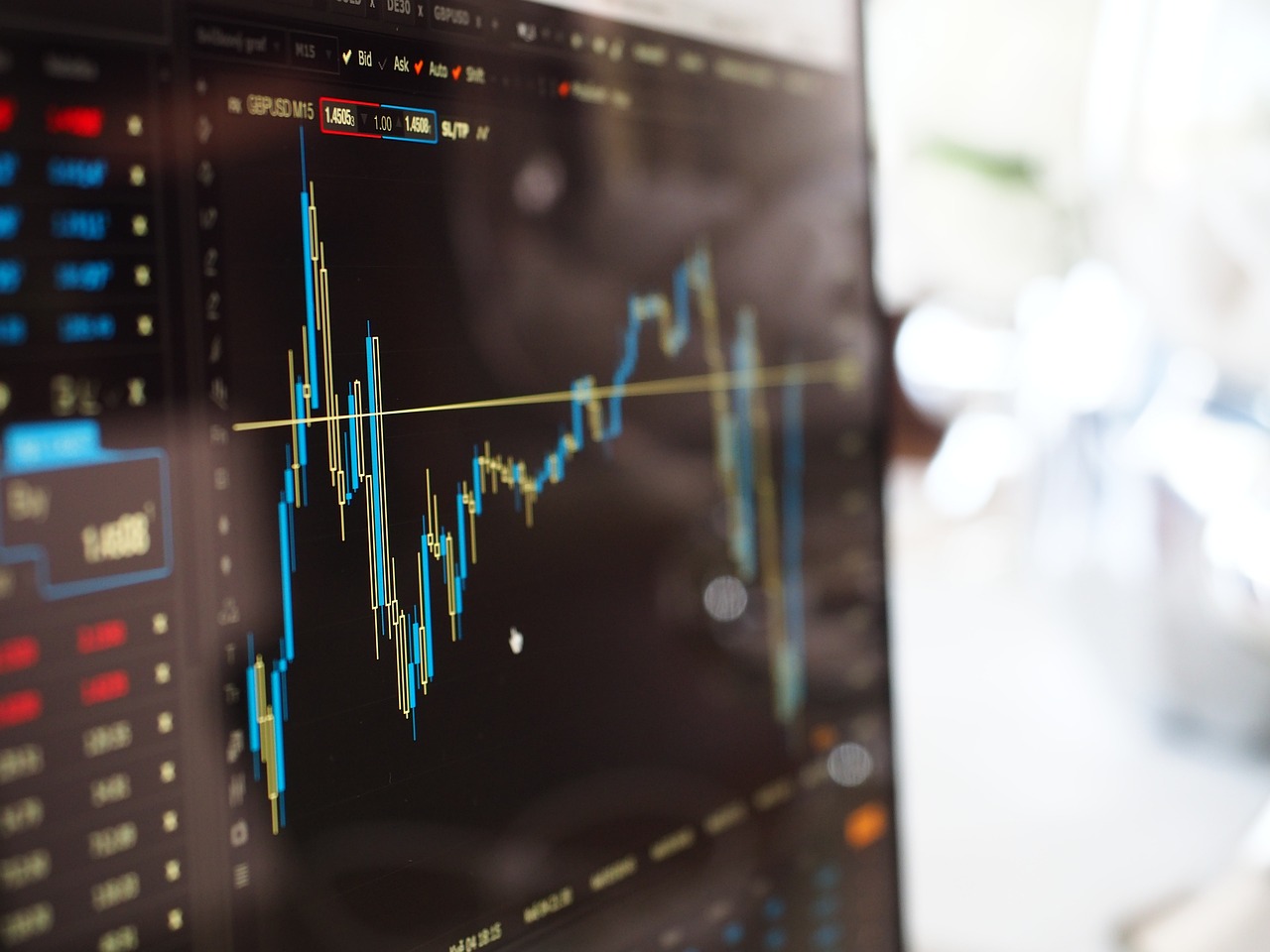
Case Studies of Viral Trends
In the fast-paced world of finance, social media has emerged as a powerful force, capable of influencing market dynamics in a matter of hours, or even minutes. To illustrate this phenomenon, let’s delve into some case studies that highlight the impact of viral trends on stock prices. One of the most notable examples is the GameStop saga, which unfolded in early 2021. Retail investors, primarily from the subreddit r/WallStreetBets, banded together to buy shares of GameStop, a company that many institutional investors had heavily shorted. This coordinated buying frenzy led to a dramatic increase in the stock price, skyrocketing from around $20 to an astonishing $483 in just a few days. The phenomenon not only demonstrated the power of collective action but also raised questions about market manipulation and the role of social media in shaping investor sentiment.
Another example that captures the essence of viral trends is the rise and fall of Dogecoin. Originally created as a joke, Dogecoin gained traction on platforms like Twitter and TikTok, fueled by endorsements from celebrities such as Elon Musk. As memes and tweets circulated, the price of Dogecoin surged from fractions of a cent to over $0.70 in 2021, creating a frenzy among retail investors. However, this meteoric rise was followed by a sharp decline, highlighting the volatile nature of investments driven by social media hype. The Dogecoin case illustrates how quickly sentiment can shift, leading to drastic price fluctuations that traditional analysis might not predict.
To better understand the broader implications of these trends, we can summarize the key characteristics of these viral phenomena in the table below:
| Case Study | Trigger | Outcome | Market Impact |
|---|---|---|---|
| GameStop | Coordinated buying by retail investors | Price surge from $20 to $483 | Increased scrutiny on short selling |
| Dogecoin | Celebrities and memes driving interest | Price increase to $0.70, followed by a sharp decline | Highlighting risks of social media-driven investments |
These case studies not only exemplify the influence of social media on market sentiment but also raise critical questions about the sustainability of such trends. Are these price movements reflective of the underlying value of the companies, or are they merely the result of speculative behavior? The volatility witnessed in these instances underscores the need for investors to approach such trends with caution. As we continue to navigate this digital age, understanding the intricate relationship between social media and market behavior will be essential for both seasoned investors and newcomers alike.
- What is the impact of social media on stock prices? Social media can amplify investor sentiment, leading to rapid price changes based on trends, memes, or viral discussions.
- How do viral trends affect market stability? Viral trends can create short-term volatility, often leading to irrational buying or selling behaviors that may not reflect the true value of a stock.
- What role does algorithmic trading play in these scenarios? Algorithmic trading can exacerbate volatility by executing trades based on market signals influenced by social media trends.
- Can retail investors truly impact the stock market? Yes, as seen in cases like GameStop, coordinated efforts by retail investors can lead to significant price movements.

Reddit and Retail Investor Influence
In recent years, the rise of platforms like Reddit has fundamentally changed the landscape of investing. Once dominated by institutional investors and hedge funds, the stock market is now witnessing a surge of retail investors who are empowered by online communities. These platforms, particularly subreddits like r/wallstreetbets, have become hotbeds for discussion, analysis, and even memes that can sway market trends. But how exactly does this shift influence market dynamics?
Reddit acts as a double-edged sword for investors. On one hand, it provides a space for retail investors to share insights, strategies, and tips, leveling the playing field against institutional giants. On the other hand, the collective power of these online communities can lead to extreme volatility. Imagine a group of friends discussing a hot stock tip over coffee. Now, amplify that conversation to millions of users sharing and promoting the same idea, and you can see how quickly a stock's price can skyrocket or plummet.
One of the most notable examples of this phenomenon is the GameStop saga. In early 2021, retail investors on Reddit banded together to buy shares and options of GameStop, a company that was heavily shorted by institutional investors. The result? A massive short squeeze that sent GameStop's stock price soaring from around $20 to an astonishing $483 in a matter of days. This incident not only highlighted the power of collective action among retail investors but also raised questions about market manipulation and the ethics of trading.
Another crucial aspect to consider is the role of sentiment analysis in these online communities. Many retail investors now rely on social media sentiment to guide their trading decisions. They analyze discussions, comments, and trends to gauge market sentiment, often leading to herd behavior. When a stock becomes a trending topic on Reddit, it can attract a flood of new investors eager to jump on the bandwagon. This can create a feedback loop where rising prices attract more attention, leading to further price increases.
However, this newfound influence of retail investors is not without its pitfalls. The spread of misinformation can lead to irrational buying and panic selling, exacerbating market volatility. For instance, if a rumor circulates on Reddit about a company’s impending bankruptcy, it can lead to a rapid sell-off, even if the information is unfounded. This demonstrates the necessity for investors to critically evaluate the information they encounter online and to be aware of the potential consequences of their trading decisions.
In summary, Reddit and similar platforms have given retail investors a voice and a community, enabling them to influence market movements significantly. This democratization of trading is reshaping how stocks are bought and sold, but it also comes with inherent risks. As we navigate this new landscape, it’s essential for investors to remain vigilant, informed, and cautious in their approach to trading.

Impact of Misinformation
The digital age has ushered in a new era of information dissemination, where news travels faster than ever before. However, with this speed comes a significant downside: the rampant spread of misinformation. In the context of financial markets, misinformation can lead to panic selling, irrational buying, and ultimately, increased market volatility. Investors are often swayed by sensational headlines or misleading statistics shared on social media platforms, which can create a ripple effect across the market.
Consider this: a single tweet or a viral post can send stock prices soaring or plummeting within minutes. This phenomenon illustrates how the emotional nature of investor behavior can be easily manipulated by false narratives. For instance, if a popular figure on social media shares a misleading article about a company's financial troubles, it can trigger a wave of selling among retail investors who fear a loss. This reaction not only affects the stock price of that particular company but can also create a cascading effect throughout the market.
To better understand the impact of misinformation, let’s look at some of the common ways it manifests in the financial sector:
- False Earnings Reports: When inaccurate information about a company's earnings is circulated, it can lead to significant price fluctuations as investors react to the news.
- Rumors and Speculation: Unfounded rumors about mergers, acquisitions, or product launches can create a frenzy, driving prices up or down based solely on speculation.
- Influencer Endorsements: When influencers or celebrities endorse a stock based on incomplete or incorrect information, it can lead to a surge in trading activity that may not reflect the company's actual value.
The consequences of misinformation are profound. Not only can it distort market prices, but it can also undermine investor confidence. When markets become unpredictable due to false information, it can lead to a lack of trust among investors, further exacerbating volatility. In essence, misinformation acts like a double-edged sword; it can create opportunities for savvy traders but can also devastate those who act on unreliable information.
In response to this growing concern, regulators and financial institutions are exploring ways to combat misinformation. Initiatives to enhance transparency and improve the accuracy of information available to investors are becoming increasingly important. For example, some platforms are implementing measures to verify the credibility of sources before allowing the dissemination of financial news. However, as the battle against misinformation continues, it remains crucial for investors to conduct thorough research and critically evaluate the information they encounter.
Ultimately, the impact of misinformation on market volatility is a reminder of the importance of responsible information consumption in the digital age. As investors, we must navigate the sea of information with caution, ensuring that our decisions are based on facts rather than fables.
- What is misinformation in the context of financial markets?
Misinformation refers to false or misleading information that can influence investor behavior and market prices. - How can misinformation affect stock prices?
It can lead to panic selling or irrational buying, causing significant fluctuations in stock prices. - What are some common sources of misinformation?
Social media platforms, unreliable news articles, and rumors can all contribute to the spread of misinformation. - How can investors protect themselves from misinformation?
Investors should verify information from multiple credible sources and conduct thorough research before making trading decisions.

Investor Behavior in the Digital Age
In today's fast-paced financial landscape, understanding investor behavior has become more crucial than ever. The digital age has not only changed how investors access information but has also transformed their decision-making processes. With the click of a button, investors can now obtain real-time data, analyze trends, and execute trades from the comfort of their homes. This shift has led to a new breed of investor—one who is more informed, yet at times, more impulsive.
One significant factor influencing investor behavior is the availability of instant information. Gone are the days when investors relied solely on financial news broadcasts or quarterly reports. Now, social media platforms and financial news websites provide a constant stream of updates, allowing investors to react almost instantly to market changes. However, this immediacy can lead to hasty decisions. For instance, an investor might see a trending stock on Twitter and jump in without conducting thorough research, driven by the fear of missing out (FOMO).
Moreover, the rise of mobile trading apps has democratized investing, enabling a broader audience to participate in the market. This accessibility has attracted younger investors who are tech-savvy and eager to engage. These millennials and Gen Z investors often approach the market with a different mindset, valuing community insights over traditional financial advice. They are more likely to seek recommendations from their peers on platforms like Reddit or TikTok, which can lead to sudden market movements based on collective sentiment rather than fundamental analysis.
Interestingly, this behavior can create a feedback loop where social media trends influence stock prices, which in turn affects investor sentiment. For example, if a particular stock gains traction on social media, it can lead to a surge in buying activity, causing the price to spike. This phenomenon was notably observed during the GameStop saga, where retail investors banded together on Reddit, driving the stock price to unprecedented heights. Such events illustrate how technology can amplify investor behavior, creating volatility in the market.
However, with the benefits of instant access to information come significant risks. The prevalence of misinformation can lead to panic selling or irrational buying. Investors may encounter false reports or misleading analyses that trigger emotional responses, exacerbating market fluctuations. It's crucial for investors to develop a discerning eye for credible information and to remain grounded in their investment strategies, even amidst the chaos of digital discourse.
In conclusion, the digital age has undeniably reshaped investor behavior, making it more dynamic yet unpredictable. As technology continues to evolve, so too will the strategies and mindsets of investors navigating this complex landscape. Understanding these changes is essential for both seasoned investors and newcomers, as they strive to make informed decisions in an ever-changing market environment.
- How does social media influence investor behavior?
Social media platforms provide real-time information and community insights, which can lead to rapid buying or selling decisions based on trends and sentiment. - What are the risks of mobile trading apps?
While they offer convenience, mobile trading apps can encourage impulsive trading and expose investors to misinformation. - How can investors protect themselves from misinformation?
Investors should verify information from multiple credible sources and stick to their research and investment strategies to avoid emotional reactions.

High-Frequency Trading and Its Consequences
High-frequency trading (HFT) has become a buzzword in financial markets, and for good reason. Imagine a world where trades are executed in fractions of a second, where algorithms analyze vast amounts of data to make split-second decisions. This is the reality of HFT, a practice that has revolutionized how trades are executed and has a profound impact on market dynamics. However, with great power comes great responsibility, and the consequences of HFT can be both beneficial and detrimental.
At its core, high-frequency trading utilizes sophisticated algorithms to capitalize on minute price discrepancies. These algorithms can process information and execute trades at lightning speed, often outpacing human traders by a significant margin. This capability can enhance market liquidity, as HFT firms provide a constant stream of buy and sell orders. But does this always translate to stability? Not necessarily. The very nature of HFT can lead to increased volatility, as rapid trades can exacerbate price swings, creating an environment of uncertainty.
Let's break down some of the key consequences of high-frequency trading:
- Market Liquidity: HFT can improve liquidity by narrowing bid-ask spreads, making it easier for investors to buy and sell assets. However, this liquidity can vanish in times of market stress, leading to sudden price drops.
- Flash Crashes: One of the most alarming consequences of HFT is the potential for flash crashes, where the market drops dramatically in a very short period. These events can be triggered by algorithms reacting to market data in unexpected ways.
- Market Manipulation: There are concerns that HFT can facilitate manipulative practices, such as spoofing, where traders place orders they have no intention of executing to create a false impression of market demand.
To illustrate the impact of HFT, consider the infamous flash crash of May 6, 2010. Within minutes, the Dow Jones Industrial Average plummeted nearly 1,000 points, only to recover shortly after. Investigations revealed that HFT played a significant role in this incident, highlighting the potential dangers of such rapid trading practices.
Moreover, the relationship between high-frequency trading and market liquidity is complex. While HFT can provide a temporary boost to liquidity, it also raises questions about the sustainability of this liquidity during turbulent market conditions. When volatility spikes, HFT firms may withdraw from the market, leaving traditional investors in a lurch. This paradox underscores the need for a careful examination of HFT practices and their implications for overall market health.
Regulatory bodies are taking note of these challenges. In response to the risks posed by high-frequency trading, various measures have been proposed to enhance market stability. These include:
- Implementing minimum resting times for orders to prevent rapid-fire trading.
- Introducing circuit breakers that temporarily halt trading during extreme volatility.
- Enhancing transparency in trading practices to deter manipulative behaviors.
As we move forward, the interplay between technology and market behavior will continue to evolve. The challenge lies in harnessing the benefits of high-frequency trading while mitigating its risks. Investors and regulators alike must remain vigilant to ensure that the financial markets operate efficiently and fairly in this new digital age.
Q: What is high-frequency trading?
A: High-frequency trading is a form of algorithmic trading that uses complex algorithms to execute trades at extremely high speeds, often in milliseconds.
Q: How does high-frequency trading affect market volatility?
A: While HFT can enhance liquidity, it can also lead to increased volatility, especially during market stress, as rapid trades can exacerbate price movements.
Q: What are the risks associated with high-frequency trading?
A: Risks include flash crashes, market manipulation, and the potential for reduced market liquidity during volatile periods.
Q: How are regulators responding to high-frequency trading?
A: Regulators are implementing measures such as circuit breakers, minimum resting times for orders, and increased transparency to address the risks associated with HFT.

Market Liquidity and HFT
High-frequency trading (HFT) has become a dominant force in modern financial markets, playing a critical role in shaping market liquidity. But what exactly does this mean for investors and the broader economy? To put it simply, liquidity refers to how easily assets can be bought or sold in the market without affecting their price. HFT firms, utilizing advanced algorithms and high-speed internet connections, can execute thousands of trades in a matter of seconds. This rapid trading activity can significantly enhance market liquidity by providing more opportunities for buyers and sellers to transact.
However, while HFT can improve liquidity, it also introduces complexities and risks. For instance, during times of market stress, HFT can exacerbate volatility. When a significant market event occurs, these automated trading systems may react swiftly, leading to a surge in trading activity. This can create a feedback loop where prices swing wildly, which might not accurately reflect the underlying value of the assets being traded. In essence, while HFT can provide a quick exit for investors looking to sell, it can also lead to chaotic market conditions that leave many scratching their heads.
To illustrate the relationship between HFT and market liquidity, consider the following table:
| Aspect | Impact of HFT |
|---|---|
| Liquidity Provision | Increases the number of buy/sell orders, making it easier to execute trades. |
| Market Stability | Can lead to increased volatility during market downturns. |
| Price Discovery | Enhances efficiency in price discovery but can distort true asset values during rapid trading. |
| Investor Confidence | May improve confidence in market efficiency, but can also lead to fear during erratic trading periods. |
It's essential to recognize that the impact of HFT on liquidity is not universally positive. While it can help facilitate transactions, the speed and volume of trades can lead to situations where liquidity suddenly dries up, leaving investors unable to execute trades at desired prices. This phenomenon was notably observed during the Flash Crash of 2010, where the Dow Jones Industrial Average plummeted nearly 1,000 points in a matter of minutes, only to recover just as quickly. Such events raise important questions about the stability of markets dominated by HFT.
In conclusion, the relationship between market liquidity and high-frequency trading is complex and multifaceted. On one hand, HFT provides essential liquidity that can benefit investors; on the other, it poses risks that can lead to significant market disruptions. As technology continues to evolve, it will be crucial for regulators and market participants to understand and address these challenges to ensure a stable trading environment.
- What is high-frequency trading? HFT refers to the use of advanced algorithms and technology to execute a large number of orders at extremely high speeds.
- How does HFT affect market liquidity? HFT can enhance market liquidity by increasing the number of buy and sell orders, but it can also lead to increased volatility during market stress.
- What are the risks associated with HFT? Risks include sudden price swings, market disruptions, and the potential for decreased investor confidence during volatile periods.
- Can HFT be regulated? Yes, regulatory measures can be implemented to mitigate the risks associated with HFT, although this remains a complex challenge for authorities.

Regulatory Responses to HFT
High-frequency trading (HFT) has become a dominant force in the financial markets, characterized by the use of complex algorithms to execute numerous orders at incredibly high speeds. While HFT has its advantages, such as improved market liquidity and tighter spreads, it also raises significant concerns regarding market stability and fairness. As a result, regulators around the world have been grappling with how to effectively manage the risks associated with HFT.
One of the primary regulatory responses has been the implementation of transaction taxes. These taxes are designed to reduce the frequency of trades by imposing a small fee on every transaction. The idea is to discourage excessive trading that can lead to market instability. Countries like France and Italy have already adopted such measures, aiming to curb speculative trading practices that do not contribute to the underlying value of securities.
Another significant regulatory approach is the introduction of minimum resting times for orders. This means that trades must remain in the market for a certain period before they can be canceled. By enforcing this rule, regulators hope to prevent the rapid-fire trading that can lead to flash crashes, where the market experiences a sudden and severe drop in prices due to a cascade of automated sell orders.
Moreover, regulators are also focusing on enhancing transparency in trading activities. This includes measures that require HFT firms to disclose their trading strategies and algorithms. Such transparency is crucial for ensuring that all market participants have a fair understanding of how trades are executed and what factors might influence price movements.
In addition to these measures, there is a growing emphasis on surveillance systems that can monitor trading activities in real-time. These systems are designed to detect unusual trading patterns that may indicate market manipulation or other unethical practices. By employing advanced analytics and machine learning, regulators can respond swiftly to potential threats, thereby maintaining market integrity.
Despite these efforts, the dynamic nature of technology poses ongoing challenges for regulators. The rapid evolution of trading strategies means that regulations must be continuously updated to keep pace. This has led to calls for a more collaborative approach between regulators and the financial industry to develop frameworks that can adapt to new technologies and practices.
In summary, while regulatory responses to HFT are essential for safeguarding market stability, they must strike a balance between curbing excessive risk-taking and allowing for the benefits that HFT can bring. As technology continues to advance, the dialogue between regulators and market participants will be crucial in shaping a fair and efficient trading environment.
- What is high-frequency trading (HFT)? HFT refers to the use of sophisticated algorithms to execute a large number of orders at extremely high speeds, often in milliseconds.
- Why are regulators concerned about HFT? Regulators worry that HFT can lead to market volatility, unfair advantages for certain traders, and systemic risks that could destabilize financial markets.
- What measures are being taken to regulate HFT? Measures include transaction taxes, minimum resting times for orders, increased transparency requirements, and enhanced surveillance systems.
- How does HFT affect market liquidity? HFT can improve market liquidity by making it easier to buy and sell securities, but it can also create conditions for rapid price changes that may lead to instability.
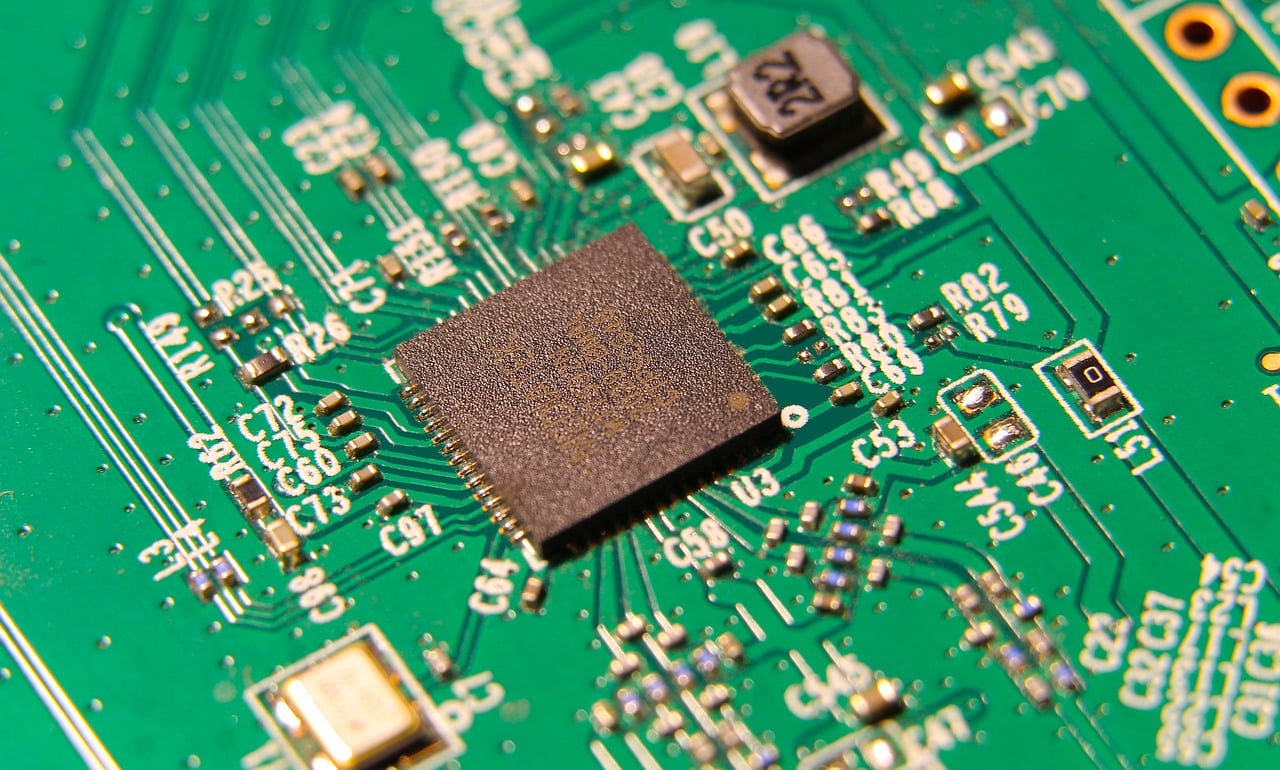
Technological Innovations and Market Predictions
In today’s fast-paced financial landscape, technological innovations are not just a luxury; they are a necessity. With the advent of artificial intelligence (AI) and machine learning, market predictions have undergone a radical transformation. Imagine trying to predict the weather without modern technology; it would be nearly impossible! Similarly, predicting market trends without the aid of sophisticated algorithms is becoming increasingly challenging. These innovations enable analysts to sift through massive datasets, identifying patterns and trends that would be invisible to the naked eye.
One of the most exciting aspects of these technologies is their ability to analyze real-time data. Traditional methods often rely on historical data, which can be outdated by the time a decision is made. In contrast, AI algorithms can analyze current market conditions, news articles, and even social media sentiment almost instantaneously. This capability allows investors to make more informed decisions, reducing the lag that often accompanies human analysis. For instance, a sudden surge in social media chatter about a particular stock can be detected and acted upon within seconds, potentially leading to significant gains.
However, it’s not just about speed; it’s also about accuracy. Advanced predictive models can incorporate various factors, including economic indicators, geopolitical events, and market sentiment, to provide a more holistic view of potential market movements. A recent study found that AI-driven models outperformed traditional models by a staggering 30% in forecasting accuracy over a six-month period. This level of precision can greatly enhance an investor's strategy, allowing for better risk management and more strategic positioning.
To illustrate the impact of these innovations, consider the following table that summarizes some key technologies and their contributions to market predictions:
| Technology | Contribution to Market Prediction |
|---|---|
| Artificial Intelligence | Real-time data analysis and pattern recognition |
| Machine Learning | Improved forecasting accuracy through adaptive learning |
| Big Data Analytics | Processing vast amounts of information for informed decision-making |
| Sentiment Analysis | Understanding market sentiment through social media and news |
Nevertheless, the integration of these technologies is not without its challenges. For one, there is the issue of over-reliance. Investors may become so dependent on algorithms that they overlook fundamental analysis and the human element of investing. Additionally, the rapid pace of technological change means that investors must constantly adapt to new tools and methodologies. It’s like trying to keep up with a rollercoaster; if you’re not careful, you might just get left behind.
Moreover, as these technologies evolve, they can also introduce new forms of volatility into the market. For instance, if a large number of traders use similar algorithms, a sudden market movement could trigger a cascade of sell-offs or buy-ins, leading to significant price swings. This phenomenon highlights the importance of not just embracing technology but also understanding its implications on market behavior.
In conclusion, while technological innovations like AI and machine learning are revolutionizing market predictions, they come with their own set of challenges. The key for investors is to find a balance between leveraging these tools and maintaining a grounded understanding of the market. As we move forward, the ability to adapt and integrate these technologies will likely define successful investors in the digital age.
- How does AI improve market predictions?
AI enhances market predictions by analyzing large datasets in real-time, identifying patterns that humans might miss. - What are the risks associated with high-frequency trading?
High-frequency trading can lead to increased market volatility and may contribute to flash crashes. - Can social media influence stock prices?
Yes, social media trends can significantly impact investor sentiment and lead to sudden price fluctuations.
Frequently Asked Questions
- How does algorithmic trading affect market volatility?
Algorithmic trading can both stabilize and destabilize markets. On one hand, it allows for rapid transactions that can enhance liquidity. On the other hand, these automated systems can react to market changes faster than human traders, sometimes leading to sharp price swings and increased volatility.
- What role does social media play in influencing investor behavior?
Social media has become a powerful tool for information dissemination among investors. Platforms like Twitter and Reddit can rapidly spread news and opinions, which can sway market sentiment and lead to sudden price fluctuations. This influence can be particularly strong among retail investors who may react impulsively to trending topics.
- Can misinformation on social media impact stock prices?
Absolutely! Misinformation can create panic or euphoria among investors, leading to irrational buying or selling. This often exacerbates market volatility as traders react to false information rather than the underlying fundamentals of a stock.
- What is high-frequency trading (HFT) and why is it controversial?
High-frequency trading involves executing a large number of orders at extremely high speeds. While it can improve market liquidity, it also raises concerns about market manipulation and increased volatility. Critics argue that HFT can create an uneven playing field for traditional investors.
- How do technological innovations like AI affect market predictions?
Technological innovations, particularly AI and machine learning, are enhancing the accuracy of market predictions. These tools analyze vast amounts of data to identify patterns that were previously undetectable, potentially leading to more informed investment decisions and greater market stability.
- What regulatory measures are in place to manage the risks of high-frequency trading?
Regulators are implementing various measures to mitigate the risks associated with high-frequency trading, such as transaction taxes, circuit breakers, and stricter reporting requirements. These regulations aim to ensure fair trading practices and reduce the potential for market disruptions.


